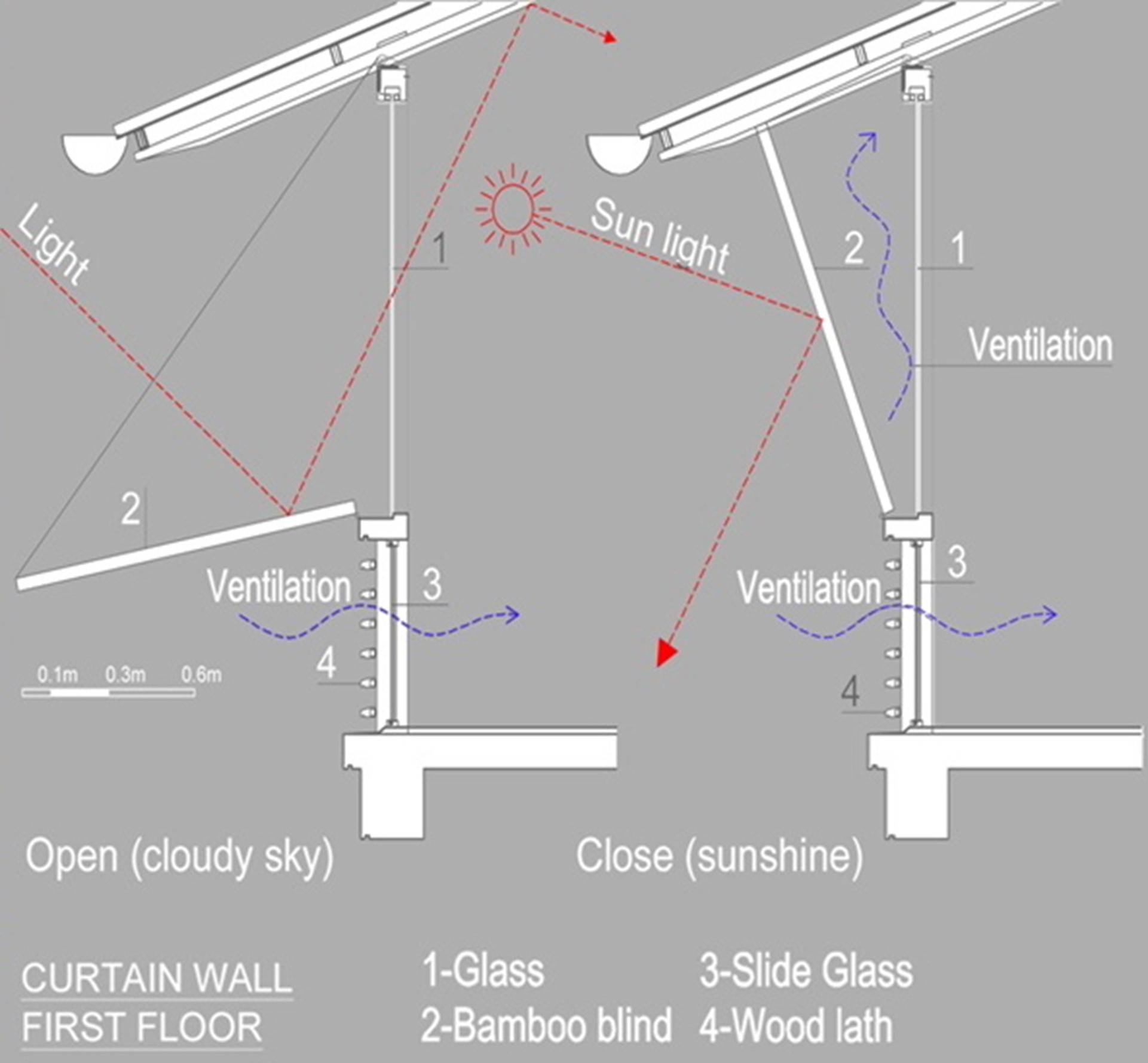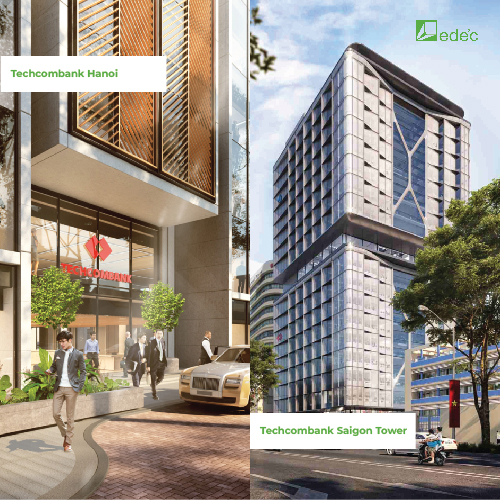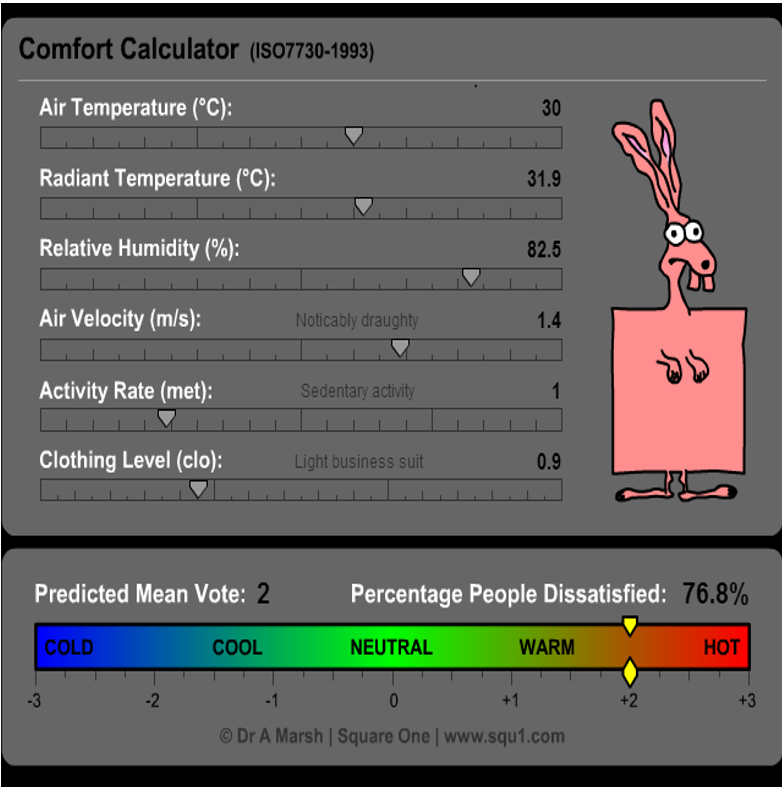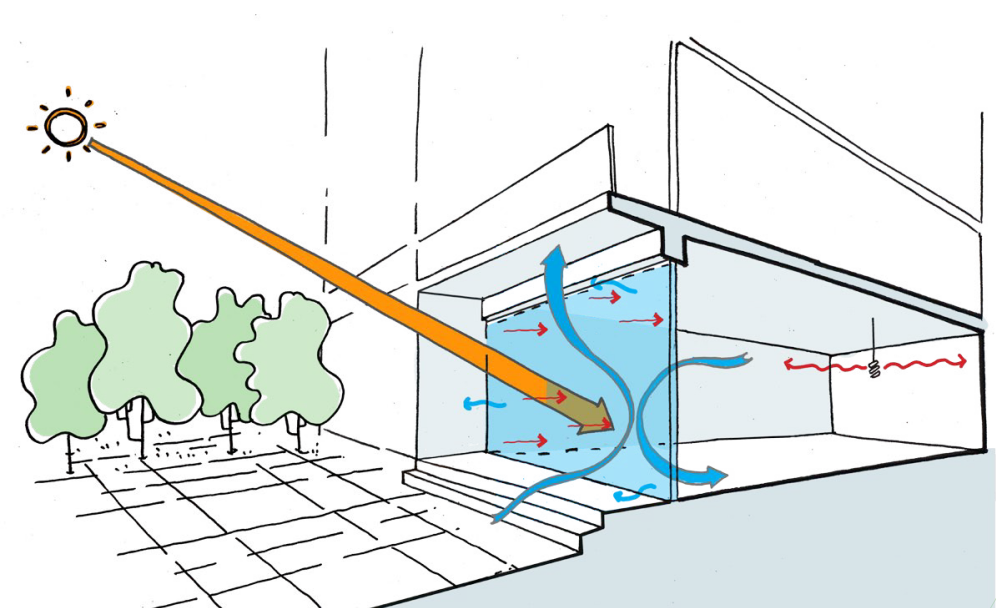RESOURCES
Which green elements for small and medium projects?

In the past 10 years, green buildings have received more and more active attention from society. As a result, a series of green certification systems have appeared on the market, such as LEED, Lotus, Cerway HQE, Edge, and Certificate. Green building of Vietnam Association of Built Environment, Green Architecture Certificate of Vietnam Association of Architects…
The majority of green certificates are awarded to projects with high investment levels, especially those that have been certified according to international standards such as LEED and HQE. So, where are the small and medium projects? Architects and homeowners only apply a few green factors in the absence of a comprehensive green certification system. What are the factors that should be emphasized? And the question that has to be the most frequently asked architect from the homeowner is “What will I and my family gain when applying green elements in the design”?
To convince investors of small and medium-sized projects to participate in a design plan with green elements (not necessarily certified), architects need to point out the “side-by-side” benefits of the owner for each specific case. Therefore, the approach to small and medium-sized projects will be different from large projects to bring green elements to life.
Some architects have undergone long-term research on microclimates, thereby understanding the issues related to the sustainability of the building and the surrounding environment. As a result, they practice sustainable design as a natural criterion in their products. It is the positive feelings of the homeowner regarding the comfort that the building containing green elements brings and the spread of the “essence” of green elements to a wider audience that is truly the greatest gift for the architect.
To demonstrate the validity of a scientific article, it is not possible to simply quote the comments of homeowners who have lived in buildings with green elements. It is necessary to prove it with scientific data. When the forecast calculation data matches the actual measurement data, the potential for calculating works still under design is great. This can open up a whole new direction in the design of houses or small projects. For the average building, energy costs will be the next concern because the building is both a house and a rental house. All of these problems will be predicted by numbers instead of just empirical estimates as before.
We would like to introduce a few projects incorporating green elements in Vietnam.
CONSTRUCTIONS WITH GREEN FACILITIES
1 – Home and office – Constructed works
This is a residential building on the first and second floors used as offices. The building is designed with the criteria of a passive house, that is, the type of house that does not require heating or cooling equipment at all. The architect mainly uses local, readily available materials and undergoes a few energy-intensive manufacturing processes.
 Project photo…
Project photo…
 … and the image of the environmental forecasting model
… and the image of the environmental forecasting model

Structure of 1st-floor door system
 Structure of 2nd-floor door system
Structure of 2nd-floor door system
The proper operation of the house is also very important. Therefore, the architect, who is also the homeowner, guides the family on how to adjust the door system according to current weather conditions. This operation should also be included in the simulation, briefly as follows:
a) 1st-floor door: When the outside temperature is in the range of 17-33oC, the air vents are fully opened
b) 2nd-floor door: With the glass above, when the outside temperature exceeds 32oC, the curtain will be pulled.
c) Low window ventilation on the 2nd floor: Open the door between 17-30oC. When the outside temperature is higher than 30oC and the inside temperature is higher than the outside, the door will be opened.
Calculation result:

The year-round temperature in the living room (reddish purple) and the temperature outside (red)

The temperature in the living room and outside temperature, January

The temperature in the living room and the outside temperature in June
The temperature in January, the coldest month, outside can drop to nearly 7oC, while the indoor temperature is around 14oC
July is the hottest month, with the outside temperature reaching 37oC and the indoor temperature hitting 33oC.
This is a survey of the average room temperature, when a detailed survey of the temperature distribution using CFD (calculation of air flow dynamics) at the hottest time of the year shows that, at the locations adjacent to the door Outside the temperature is higher, the air temperature in the room is only about 30-31oC. Concrete surfaces are quite cool, 28oC. Therefore, the actual perceived temperature will be at the average of the above two ranges and only a small fan is enough to ensure indoor comfort.

Room temperature distribution details in CFD

The temperature in the bedroom and outside temperature from January to December

The temperature in the bedroom and the temperature outside in July

Room temperature distribution details in CFD
Furthermore, in the bedroom on the first floor, readers can see that the high temperatures are mainly distributed along the outer wall and in the air layer adjacent to the door. The temperature in the room is 29.2oC. This is enough to produce a pleasant microclimate with just one small fan.
2 – High-class housing – Research on the possibility of building zero-energy housing in Ho Chi Minh City
This is a high-class housing project, with a high investment rate, and is expected to become a zero-energy project. The research and implementation process is quite favorable in terms of design coordination between the units. The initial research results are also very practical. Initial testing has revealed that the building can achieve the energy level of a passive building (under 15 kWh/m2/year), resulting in 4.75 kWh/m2/year. Outside of the design process, other factors have caused the process of in-depth research as well as construction implementation to be suspended. But in terms of expertise, the design team believes that implementing a private house up to 8 floors to achieve zero energy is not too difficult to do in Vietnam.

Energy forecasting model and building perspective
To achieve the Net Zero Energy goal, an appropriate strategy for the design phase is essential. The strategies outlined initially include the following:
– The heat delay of the heavy wall block is utilized to cool the hot time of the day. – Consider using geothermal if thermal mass and insulation do not provide enough comfort. The air entering the house will be led underground to exchange heat before entering the house
– Low-G box glass, sound insulation: Constructions in Vietnam mainly use low-g glass, which is difficult to ensure comfort. Only high-grade Low-E glass effectively blocks heat radiation but still lets more visible light through.
– Automatic opening and closing of doors and shutters: Intelligent control components will be programmed based on optimization results when simulating energy with different operating scenarios;
– Wind power generation from Maglev equipment: New generation wind power equipment uses a vertical rotating shaft with a magnetic cushion, so it operates with very high efficiency due to almost no rotational friction;
– Solar battery system: Make the most of the energy from the sun and the extremely high number of sunny hours in Ho Chi Minh City to generate electricity, which can be combined with the rotation system;
– Advanced lighting system: Using a high-quality LED lighting system for lighting. This system combines smart sensors and controls to optimize lighting, and minimize electricity use;
– Ceiling fan with automatic control: A simple, yet highly effective solution to ensure comfortable use;
– Small air conditioning system with high efficiency, combined with a hot water heating system.

Heat and energy forecasting model
In the initial research process with different types of insulation, in combination with heat blocks, it became clear from the beginning that the temperature inside the house (with a non-air-conditioning setting) could be adjusted quite clearly.

The temperature on the 6th floor, bedroom
The library room on the 6th floor has a clear temperature change when taking advantage of insulation and thermal mass. When not insulated like conventional construction, the highest temperature in the room is 34.8oC, respectively applying types 1 and 2 in the calculation, the temperature changes down to 33 and 30.7oC. Type 2 is insulation but at the same time utilizes heat mass. Further calculations using CFD show that the air temperature in the room falls to about 29oC.

The temperature on the 3rd floor – the library

Survey CFD room library
On the 3rd floor, the library room has the highest temperature in the summer from 36.2 to 32.2oC. CFD survey shows that the temperature does not fall to about 31.5oC.
This building uses approximately 4.75 kWh/m2 of electricity, similar to the usage and renewable energy that is shown below. This consumption is low enough for further research toward zero energy building.

Correlation of energy use

Potential of renewable energy when installing PV and wind turbine
CONCLUSION
With large projects, and public works in the form of offices, hotels, hospitals, etc., the operating costs will be large amounts of money, so when consulting to calculate this problem, it often receives the right attention and the first owner. investors have greater investment considerations for energy-saving practices.
For small and medium-sized housing, green certification is often not a concern for homeowners due to low electricity prices in Vietnam, investments in renewable energy, and reduced-use design. Energy often has a very long payback period. Therefore, campaigning to design energy-saving buildings to reduce about 500,000 VND or even 2,000,000 VND per month can hardly bring investors to green elements in the design. However, back to the original question, what is the “side-by-side” benefit of the homeowner when designing a building with green elements: It is thermal comfort.
The fact that a building without insulation and good insulation reduces the temperature from 35oC to less than 30oC at the hottest time of the year will make the value of the building skyrocket, but it is not easy to value this value. Only those who have lived and experienced these works can understand their value.
It is not natural that Vietnamese people still love the French-designed and built houses in Indochina from the colonial period. But few people experience what it feels like to live in it, the feeling of “negative” coolness indoors when it’s hot outside “fires” always impresses those who have tried it. It is completely different from the feeling of using air conditioning in a house with many glass doors with thin walls. This feeling can only be obtained when the interior wall surfaces of the building are cool enough, radiant heat from the skin surface is transmitted directly to the wall surface. Unfortunately, the design of French-style buildings in Indochina only stops at imitation of form, and the greatest value is thermal comfort, which is much more difficult to implement. This happens for many reasons, the first of which is due to the high price of land, making it difficult to build walls up to 600mm or even 800mm thick as before… With new technology and techniques, thickness reduction is guaranteed. cooling for the wall surface is possible, as the case of the 6th-floor bedroom of Example 2 shows that during the hottest part of the year the room temperature drops from 34.8 to 30.2oC, detailed calculation with CFD for found only 29oC indoors.
The more society develops, the higher the needs of people, the design of houses with green elements can only be done by putting the owner’s living comfort first, thereby reducing the cost-of-living expenses. home energy use. Doing more and more every day, each architect contributing a little on a large scale will contribute to reducing CO2 emissions and reducing the need to build power plants on a national scale, only then can we keep our commitments. in terms of emissions reduction because; in fact, energy for housing in Vietnam accounts for 90% of the output of the building energy sector.
Architect Tran Thanh Vu






